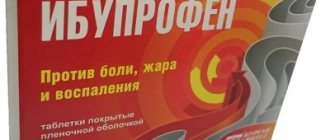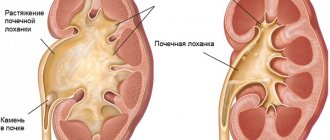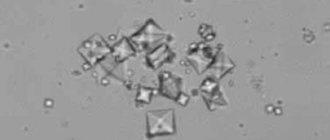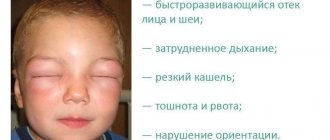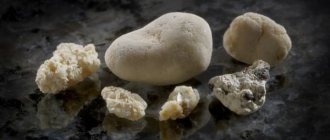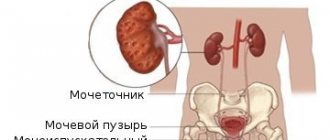- Causes of the disease
- Symptoms of pathology
- Treatment of pathology
Metabolic disorders cause various pathologies. One of them is oxaluria in children. With this urolithiasis, kidney damage develops, since the urine contains an excessive concentration of oxalic acid and oxalates, and insoluble salts and calcium oxalates are deposited in the child’s filtering organ. Over time, oxalate stones form.
Diet for oxaluria - basic principles:
1. Avoid foods rich in oxalic acid.
2. Limit foods that can be a source of oxalic acid formation in the body.
3.Give plenty of fluids to remove sediment of oxalic acid salts from the urinary tract.
4. Include in your diet foods rich in vitamin B6 and magnesium, the deficiency of which in the body is associated with a violation of oxalic acid metabolism.
5. Include in your diet foods that help remove oxalic acid from the body.
6. Include in your diet foods containing vitamin A, which reduces the level of calcium in the blood and helps stop the precipitation of calcium oxalate in urine.
Basics of a healthy diet
The diet for oxalate lithiasis must comply with the following rules:
- the drinking regime should be maximized to reduce the relative density of urinary fluid and quickly remove salt deposits;
- maximum limitation of the intake of components with food that contribute to the formation of oxalates and the active spread of urolithiasis;
- you should not overeat to avoid imbalance of metabolic processes;
- It is recommended to strictly adhere to the menu prescribed by your attending physician.
Diet for oxaluria - exclude the following foods:
Sorrel, spinach, beans, figs, rhubarb, pepper, purslane, cocoa, chocolate (foods rich in oxalic acid).
Limit in the diet for oxaluria:
1. carbohydrates up to 300-350g per day, since oxalic acid can be formed from them in the body.
2.gelatin (jellied dishes, jellies), which can be a source of formation of oxalic acid in the body.
3. table salt.
4.spicy, salty, smoked foods.
5. spices.
6.extractive substances (meat, fish, mushroom broths, fried, stewed meat or fish without prior boiling).
7. foods rich in purines (however, to a lesser extent than in cases of impaired purine metabolism, accumulation of uric acid and the formation of urate stones).
8. beets, onions, potatoes, carrots, tomatoes, blueberries, black currants, which contain oxalic acid in moderate quantities. Most other vegetables, berries and fruits contain little oxalic acid.
9. in case of exacerbation of the disease, limit foods containing a lot of calcium salts (milk, dairy products).
Recommended foods on this diet
Based on the principles described above, we can name the following products that should be present in this diet:
- The oxolate diet involves foods that are very easily absorbed by the body. At the same time, food should remain nutritious.
- It is necessary to limit the amount of fast carbohydrates in the child’s diet. Parents should not worry that their children will have nowhere to get strength. They will replenish their energy reserves with cereals and bread made from wholemeal flour.
- It is important to saturate the children's diet with foods that contribute to a faster release of salts. These products include: grapes, sweet apples, pears, prunes, dried apricots.
- Part of the drinking regime for such children should be mineral water with alkali. In addition, the drinking regimen should include fresh juices made from vegetables and fruits. Fruit drinks and berry compotes. If a child is allergic to specific berries, then, of course, it is important to exclude them from the diet.
- It is important to limit your salt intake to a minimum.
- On this diet, you need to be careful with the consumption of honey and white sugar. You can consume a maximum of a tablespoon per day in the total amount of honey and sugar.
- As for protein foods, the diet may include lean white meat. Fish can be fatty. Choose sea fish, which contain less harmful substances. The fact is that river fish swim almost at the bottom, therefore they contain more harmful substances. And sea fish live in medium waters, so they contain fewer harmful substances. It is important to steam meat and fish dishes.
- A diet with oxalates in the urine allows the consumption of fermented milk products. When choosing hard cheese, give preference to low-fat varieties that have a low salt content.
- As for chicken and quail eggs. Then children with oxolates in their urine can eat only one chicken or two quail yolks per day. You can't eat egg whites.
- Among vegetables, it is important to consume potatoes, cauliflower and cabbage. It is very healthy to eat pumpkin; this vegetable contains a lot of alkali. Include carrots and cucumbers in your diet. The vegetables listed are good because they contain minimal oxalic acid.
Include in the diet for oxaluria:
-Apples, plums, pears, quince, dogwood, grapes, celery, decoctions of fruit peels (help remove oxalic acid salts from the body).
-Foods rich in vitamin B6: animal and poultry meat, fish: halibut, herring, mackerel), oatmeal, buckwheat, pearl barley, millet, eggs.
-Products containing magnesium: wheat bran, nuts, dried fruits, seafood, rabbit meat, buckwheat, oatmeal, millet, rose hips, celery leaves, green salad, bananas, tangerines.
- Low-mineralized waters containing sodium bicarbonate, bicarbonate and others: Essentuki 20, 4, 17, Naftusya, which help stop the precipitation of oxalates in urine sediment.
-Drink plenty of fluids: up to 2 liters of liquid per day: water, fruit and berry juices, infusion of fruit peels.
-Products containing vitamin A: sea buckthorn, red pepper, carrots (limited), butter, lettuce, pumpkin, apricots, chokeberry, sour cream, cottage cheese.
-A large number of vegetables and fruits, which contribute to alkalization of the body and thereby the removal of oxalic acid.
For oxaluria, nutritionists recommend using diet No. 5 with limiting carbohydrates to 300-350g, increasing fluids to 2 liters, and prescribing fasting days.
Recommendations on diet for oxaluria by Professor Marshak M.S. “Dietary Nutrition” 1967, Professor Smolyansky B.L. “Handbook of clinical nutrition for dietitians and cooks” 1984.
Below are recipes for dishes recommended by nutritionists for a diet with oxaluria.
Diet for oxaluria, recipes:
e-znahar.ru
Allowed diet foods for oxalate kidney stones
During the diet for oxalate kidney stones, it is allowed to eat fish, meat and low-fat poultry in baked/boiled form in small quantities, wheat and rye bread made from second-grade flour, vegetable oil, porridge, almost all cereals (buckwheat, pearl barley, oatmeal , wheat), dairy products (sour cream, fermented milk products, butter (in the first half of the day).
Vegetables and fruits in the diet include cauliflower and white cabbage, boiled potatoes, eggplant and squash caviar, carrots, eggplants (in moderation), pumpkin, cucumbers, apricots, bananas, grapes, pears, prunes, apricots, cilantro, sour apples, watermelons, melon, peaches, dogwood, quince, rowan.
Drinks include juice from dried apricots, pears, prunes, birch, cucumber juice, compotes, jelly, slightly alkaline mineral waters.
Table of permitted products
| Proteins, g | Fats, g | Carbohydrates, g | Calories, kcal | |
| Vegetables and greens | ||||
| zucchini | 0,6 | 0,3 | 4,6 | 24 |
| broccoli | 3,0 | 0,4 | 5,2 | 28 |
| Brussels sprouts | 4,8 | 0,0 | 8,0 | 43 |
| cauliflower | 2,5 | 0,3 | 5,4 | 30 |
| carrot | 1,3 | 0,1 | 6,9 | 32 |
| cucumbers | 0,8 | 0,1 | 2,8 | 15 |
| pumpkin | 1,3 | 0,3 | 7,7 | 28 |
| Fruits | ||||
| apricots | 0,9 | 0,1 | 10,8 | 41 |
| quince | 0,6 | 0,5 | 9,8 | 40 |
| bananas | 1,5 | 0,2 | 21,8 | 95 |
| pears | 0,4 | 0,3 | 10,9 | 42 |
| melon | 0,6 | 0,3 | 7,4 | 33 |
| peaches | 0,9 | 0,1 | 11,3 | 46 |
| Berries | ||||
| grape | 0,6 | 0,2 | 16,8 | 65 |
| Nuts and dried fruits | ||||
| prunes | 2,3 | 0,7 | 57,5 | 231 |
| Cereals and porridges | ||||
| buckwheat (kernel) | 12,6 | 3,3 | 62,1 | 313 |
| oat groats | 12,3 | 6,1 | 59,5 | 342 |
| cereals | 11,9 | 7,2 | 69,3 | 366 |
| Wheat groats | 11,5 | 1,3 | 62,0 | 316 |
| wheat bran | 15,1 | 3,8 | 53,6 | 296 |
| Bakery products | ||||
| wheat bread | 8,1 | 1,0 | 48,8 | 242 |
| Dairy | ||||
| milk 1% | 3,3 | 1,0 | 4,8 | 41 |
| kefir 1% | 2,8 | 1,0 | 4,0 | 40 |
| sour cream 10% (low-fat) | 3,0 | 10,0 | 2,9 | 115 |
| Meat products | ||||
| boiled beef | 25,8 | 16,8 | 0,0 | 254 |
| Bird | ||||
| turkey | 19,2 | 0,7 | 0,0 | 84 |
| Eggs | ||||
| chicken eggs | 12,7 | 10,9 | 0,7 | 157 |
| Fish and seafood | ||||
| boiled fish | 17,3 | 5,0 | 0,0 | 116 |
| Oils and fats | ||||
| butter | 0,5 | 82,5 | 0,8 | 748 |
| Non-alcoholic drinks | ||||
| mineral water | 0,0 | 0,0 | 0,0 | — |
| Juices and compotes | ||||
| apricot compote | 0,5 | 0,0 | 21,0 | 85 |
| Birch juice | 0,1 | 0,0 | 5,8 | 24 |
| grape juice | 0,3 | 0,0 | 14,0 | 54 |
| dried apricot jelly | 0,4 | 0,0 | 12,9 | 54 |
| cucumber juice | 0,8 | 0,1 | 2,5 | 14 |
The essence of the hypooxalate diet
The diet for oxalurgy is primarily aimed at preventing the enlargement of stones and the formation of new ones. Since oxalates are derived from the salt of oxalic acid, it is necessary to completely exclude all products containing it from the diet. Restoring the water-salt balance is also important, so you need to follow the drinking regime.
If children have urate stones, their diet is practically no different from that of an adult, but you will have to be more careful to ensure that the child under no circumstances consumes foods from the prohibited list. Children's kidneys are more delicate, and if the disease worsens, it will be much more severe and can lead to serious consequences.
If the cause is urolithiasis
If the cause of oxalate in the urine is kidney stones, then the diet for oxalate stones is the same as for urolithiasis. The principles of nutrition for urolithiasis and oxalate stones are approximately the same as for oxalates in the urine. The diet for oxalate stones is identical to the diet for oxalate in the urine. The diet for urolithiasis is slightly different if the stones are, for example, urates. It occurs when there are other elevated salts in the body.
If tests indicate that urates, and not oxalates, are found in the urine, then in therapeutic nutrition it will be necessary to focus on other products. These stones appear due to excess uric acid in the body. The diet for oxalate stones is similar to the diet for urate stones in the urine of a child in that the course is taken to alkalize the body. A diet with urates and oxalates in the urine will have a milky-vegetable character. But we are talking only about general provisions. A diet for urates and also oxalates should be prescribed by a doctor.
Important Rules
To maximize the effectiveness of the diet and speedy recovery, you must also follow the following rules and recommendations:
- Boil or steam the products, and after this pre-treatment they can be lightly fried, stewed or baked.
- Broths are not used after boiling fish and meat - they contain a high content of purines, which irritate the kidneys. When preparing soups, the first broth is drained, the meat or fish is poured with clean water and the cooking process continues.
- Meals should be fractional - 5-6 times a day in small portions. Daily caloric intake is calculated individually, taking into account age, weight and physical activity.
- The amount of water you drink per day is at least 2 liters, unless there are complications with the kidneys or urinary system that limit fluid intake.
- You can drink clean filtered water, green tea or anti-inflammatory decoctions of medicinal herbs (preferably as prescribed by a doctor).
- The consumption of table salt will have to be limited as much as possible, no more than 5-6 grams per day. Cook food in unsalted water and then lightly add salt.
- The menu should contain as many fresh fruits and vegetables as possible, except for those on the list of prohibited foods.
- The amount of high-carbohydrate foods is also limited: sweets, premium flour products, very sweet fruits.
- Protein should be easily digestible: lean meats or fish, dairy products. Protein food should be on the table in the first half of the day.
- Animal fats are excluded, butter is replaced with unrefined vegetable oils.
- When additionally taking multivitamin complexes, you should not use drugs with a high content of vitamin C.
Rules for creating a menu for urolithiasis
The diet menu for oxalaturia should include the following products:
- stale bread, with bran and made from wholemeal flour;
- low-fat fermented milk products;
- butter;
- hard cheeses with a high salt content should be eliminated from the diet; Parmesan or Mozzarella can be an alternative;
- for lunch meals, milk or meat soups are prepared in vegetable broths;
- no more than 150 g of meat or fish products (low-fat varieties) per day are allowed. The heat treatment used is steaming, stewing or boiling.
- Limit the amount of salt and carbohydrate-rich foods you consume as much as possible.
- Chicken eggs can only be eaten boiled, no more than one per day.
- Carrots are subject to mandatory heat treatment.
- The optimal option for drinking regimen for urolithiasis is an infusion of currant and pear leaves, as well as grape cuttings.
Any pasta must be combined with permitted vegetables, fresh or stewed, it does not matter.
Basics of drinking regime
Treatment of any type of urolithiasis should be accompanied by an increase in the amount of fluid you drink. In addition to warm drinks, calcium lightly carbonated water, produced under the Essentuki No. 20 and Sairme brands, promotes the rapid removal of oxalate stones.
Using mineral water helps dissolve and remove tumors from the body. Mineralization is carried out in two stages. At the first stage, the stones are broken down, at the second stage, colloidal compounds are formed that perform a protective function. Neoplasms include not only oxalates and sand, but also mucus or purulent fluid formed during inflammation. Colloids activate the elimination process and further prevent the disease.
The whole process takes quite a long time. Mineral therapy to eliminate the symptoms of oxalate lithiasis takes 4–6 weeks.
However, the water regime can be supplemented with special herbal preparations that actively influence the process of oxalate removal.
Collection 1
- birch leaves 100 g;
- horsetail 100 g;
- pansies 40 g.
- From the prepared collection, take 2 tbsp. and pour 200 ml of hot water.
- Leave covered for half an hour.
- Filter.
- Use 100 ml. three times a day, half an hour before meals.
Collection 2
- horsetail 15 g;
- thyme 15 g;
- St. John's wort 30 g;
- fragrant violet 10 g.
- 2 tbsp. spoons of the mixture pour 250 ml of boiling water.
- Place in a water bath and simmer for 15 minutes.
- Leave covered for half an hour.
- Filter.
- Use 100 ml three times a day, 20 minutes before meals.
Hypooxalate menu
The menu for the week is compiled independently. You need to try to balance and diversify it as much as possible. All products can be divided into three groups: recommended, acceptable in limited quantities, prohibited. The latter are excluded completely until final recovery, especially from the children's diet.
This list includes:
- spinach;
- sorrel;
- figs;
- cocoa;
- chocolate;
- rhubarb;
- purslane;
- parsley;
- celery;
- smoked meats;
- pickles;
- marinades;
- hot sauces;
- rich broths;
- gelatin;
- animal fat.
List of foods that can be eaten in very limited quantities:
- potato;
- tomatoes;
- beet;
- blueberry;
- black currant;
- sour berries;
- kiwi and citruses;
- green bean;
- chicory, black tea.
Products on which the hypooxalate diet is based:
- all types of cabbage;
- pumpkin and melons;
- cucumbers;
- peas;
- grapes, apricots, apples, bananas;
- any cereals;
- White bread;
- unrefined vegetable oils.
Lean meat and fish are allowed no more than once a day after preliminary boiling. Dairy products are also in limited quantities.
An approximate menu for the day could be like this:
- Breakfast: any porridge with milk; tea.
- Second breakfast: cottage cheese casserole.
- Lunch: vegetable soup; a piece of meat or fish with a side dish of porridge or pasta; cucumber salad; compote.
- Afternoon snack: apple or banana.
- Dinner: potato or pumpkin puree; egg; a glass of kefir.
abgym.ru
Approximate menu
Doctors have developed several dietary menu options for oxalate stones in urine.
Option 1
Breakfast: rice porridge with dried fruits and milk, fresh apple juice.
Second breakfast: sandwich with butter and cheese.
Lunch: barley soup with vegetable broth, vegetable stew, toasted rye bread, fruit jelly.
Afternoon snack: fruit salad of quince, banana and apricot, dressed with yoghurt.
Dinner: fish baked with noodles, fresh cabbage salad, iodized mineral water without gases.
Second dinner: low-fat kefir.
Option 2
Breakfast: cottage cheese casserole, coffee with cream.
Second breakfast: bagels and yogurt.
Lunch: soup with buckwheat and meatballs, baked vegetables with butter.
Afternoon snack: apple stuffed with prunes, baked with honey.
Dinner: steamed chicken cutlets, cauliflower fried with egg, fresh tomato and lettuce salad, green tea.
Second dinner: pear.
Features of oxalate stones
Oxalate stones are formed from crystals of the calcium salt of ammonium oxalate. A person receives oxalic acid compounds from food, especially when preferring greens and fatty meats.
The crystals are durable and have sharp, thorn-shaped edges. It's difficult to destroy them. The section often shows layering, which indicates the addition of other chemical compounds. The color of the stone is brown-black. The sizes range from a few mm in diameter to 5–6 cm. When localized in the renal pelvis, they acquire a coral-shaped shape and occupy the entire cavity.
List of approved products
Following a diet leads to the destruction of the alkaline reaction in the urine, which accelerates the excretion of oxalic acid derivatives from the body.
The following foods should be consumed:
- cereals: oats, buckwheat, millet, pearl barley and soups;
- vegetables: cauliflower and cabbage, pumpkin, cucumber, cabbage root, carrots, potatoes;
- fruits: pears, grapes, sweet apples, peaches, bananas, melons;
- berries: cranberries, strawberries, cherries, watermelon;
- vegetables: coriander.
The urinary oxalate diet allows you to consume no more than two tablespoons of sugar per day, based on the content of the foods you consume. If you are not allergic, add a tablespoon of honey or stewed and ground fruit to the prepared dish.
Vegetable soups are considered the best dish, especially cabbage soup with fresh cabbage without spices. Among meat products with a high content of oxalates in the urine, boiled or baked beef, chicken, turkey and minced lean meat are recommended. 200 g three times a week or 100 g once a day can be eaten as dietary sea fish.
Countermechanisms
The urine of a healthy person has a slightly acidic reaction. Metabolic disorders lead to acidification or alkalization. If the acid-base balance is disturbed, then the dissolved salts first turn into a crystalline form, then they form stones (calculi). Oxalates precipitate as acidity increases and urine pH drops below 6.0.
In the human body there are antagonist substances that control the course of biochemical reactions, and when excess components appear, they are able to bind. These include:
- enzymes-catalysts of chemical transformations;
- magnesium ions;
- compounds of pyrophosphoric and citric acids.
Causes
Oxalaturia occurs when metabolic processes are disrupted. Part of the oxalic acid is not consumed or processed, but turns into salt crystals. The processes occurring in the kidneys are called tubulopathies, since they are always associated with the proximal and distal parts of the tubules.
Substances accumulate in the kidney and are used to build stones. Pathogenetic factors are divided:
- to exogenous (external);
- endogenous (internal).
Exogenous ones include:
- climatic conditions (hot climate, humidity);
- composition of water in the area of residence (saturation with mineral salts);
- dietary features – excess of canned food, salt, vitamin D, lack of vitamins A and C.
The following are considered endogenous:
- disturbance of urine outflow;
- slowing blood circulation in the kidney;
- chronic inflammatory processes.
Modern research attaches great importance to the role of the Tamm–Horsfall protein, discovered in 1950. This is a glycoprotein located on the membrane of tubular epithelial cells. Its ability to suppress oxalate crystallization has been proven. The study of synthesis led to the conclusion that when the level of this protein decreases, the growth of oxalate crystals and their gluing into stone structures increases.
Particular attention among endogenous factors is paid to hyperfunction of the parathyroid glands. It causes dystrophic changes in the tubules, which increases the level of mucopolysaccharides in the blood and urine. These substances are capable of subsequently forming the core for stone structures. Some authors assign this role to insoluble fibrin.
Predisposing factors for the formation of stones and their appearance in the urine are:
- the presence of congenital malformations of the ureters, kidneys, and bladder in children with oxalaturia, creating the possibility of stagnation of urine;
- blockage of the urinary tract, narrowing of the ureter due to a scar;
- neurogenic dyskinesias, causing spasms of the ureters;
- injuries and foreign bodies.
Conditions for changes in metabolic processes and precipitation of urine salts are created in the following diseases and conditions:
- limited fluid intake or increased losses due to sweating, use of diuretics, vomiting, diarrhea;
- diabetes mellitus;
- lack of magnesium and other antagonists in the body;
- inflammatory diseases of the genitourinary area;
- impaired metabolism of oxalic acid;
- the need for long-term bed rest for injuries, stroke, heart disease;
- hereditary predisposition;
- previous operations on the stomach and intestines;
- frequent stressful situations;
- Crohn's disease.
Useful videos
Oxalaturia is a kidney disease associated with a malfunction in the body's metabolic processes, namely oxalic acid. The disease appears due to the low content of certain substances in the body, which are responsible for making it difficult for salts to settle in urine and promoting their dissolution. The consequence of the disease is the formation of stones formed from oxalic acid salts.
A diet for oxalaturia is a mandatory item in a set of therapeutic measures aimed at normalizing metabolic processes, breaking down the formed oxalates and further preventing their formation. A properly composed menu, including for oxalaturia in children, helps to normalize protein synthesis, which is produced by the absorption of amino acids in the esophageal canal, and to prevent the loss of crystals of oxalic acid salts, which subsequently form insoluble oxalates.
How is oxalate detected in a urine test?
The vitamins, electrolytes, and antioxidants necessary for the body are contained in the blood only in the form of dissolved salts. They are needed for inclusion in various biochemical reactions. In the case of pathology, individual salt residues are detected in the analysis of venous blood using biochemical tests. Oxalaturia is considered a clinically significant finding when an insoluble compound is detected.
The test tube with urine is pre-centrifuged, then a drop of sediment is transferred to glass. The laboratory assistant distinguishes the type of crystals by shape and color. Single crystals in the field of view are called amorphous. It has been established that they do not participate in the formation of stones in the urine and are therefore harmless. But they are taken into account in terms of further prevention of metabolic disorders. If it is necessary to conduct a targeted analysis to study the type of salts, then it is suggested to collect urine per day. This eliminates fluctuations in release in individual portions.
Symptoms
Symptoms of oxalaturia are determined by the underlying pathology that contributes to metabolic changes. From the urinary system the following are noted:
- dysuria with frequent urge to urinate, cramps, pain;
- blood in the urine, determined visually (gross hematuria);
- reddish color of urine;
- pain above the pubis, in the groin, in the lumbar region on one side, intensifying after physical activity, long walking, shaking in transport (in children under 5 years of age there is often no pain);
- increasing fatigue, weakness;
- periodic increase in temperature.
A urine test reveals hematuria, a lot of leukocytes, possible pus, protein. An attack of renal colic occurs when the outflow of urine is impossible due to blockage of the urinary tract by a stone, blood clot or pus. The clinic develops suddenly and lasts up to three days. In this case, the patient has:
- intense unilateral pain in the lower back with irradiation to the groin, half of the abdomen, external genitalia;
- urge to urinate;
- lack of spontaneous urination or urine excretion in drops with blood;
- nausea and vomiting;
- temperature increase.
At the end of the attack, there may be separation of sand or stone.
Diet
Treatment of oxalaturia is not complete without a targeted diet. Among the products and prepared dishes on the menu, it is necessary to provide for the maximum exclusion of oxalic acid from food with an increase in calcium and magnesium.
Nutritionists divide all products into 4 groups based on the concentration of oxalic acid:
- with a maximum content of more than 1 g/kg (cocoa, spinach, chocolate, sorrel);
- with a moderate amount – 0.3–1 g/kg (carrots, beans, beets, tomatoes);
- with low content – 0.05–0.3 g/kg (fresh white cabbage, potatoes, apricots, currants);
- with a minimum amount - eggplants, cucumbers, peas, pumpkin, mushrooms.
When calculating a diet, the doctor recommends completely eliminating:
- hot seasonings, mustard;
- smoked and fried meat dishes (cook in a double boiler);
- use of liver, kidneys;
- from greens - spinach, celery, sorrel;
- any legumes (except beans);
- nuts;
- apricots, kiwi fruits;
- canned tomatoes and other vegetables;
- sparkling water;
- cocoa;
- chocolate and confectionery products based on it.
Restrictions are imposed on products containing oxalic acid, but necessary for the body for various functions:
- fat meat;
- carrot;
- beets;
- beans;
- Black tea;
- green and onions;
- chicory.
Required products include:
- kefir, yoghurt, fermented baked milk, cottage cheese;
- rye-wheat bakery products;
- lean meat, poultry;
- fish;
- potato;
- eggs without yolks;
- mineral alkaline water without gas;
- fresh vegetables in salad, fruits rich in vitamin C.
Completely prohibited or partially limited diet foods for oxalate kidney stones
In the diet for oxalate kidney stones, foods rich in oxalic acid are completely excluded, such as strong tea, sorrel, spinach, offal (kidneys, tongue, brains, liver), fatty meats and fish, bread kvass, jelly, gelatin-containing dishes, cocoa , coffee, chocolate, rhubarb, mushrooms, pickled vegetables. During the period of exacerbation, the consumption of potatoes, beets, tomatoes, onions, and carrots is also limited. Salted cheeses, canned food, smoked meats, fish caviar, as well as soups prepared in strong broths (meat, fish and mushroom) and containing legumes, spinach, sorrel, and vegetable caviar are excluded.
The consumption of milk (up to 250-300 g per day), fermented milk products and lean meat (no more than 150 g / day), fatty sausages, pork, beef and cooking fat, and pasta is limited. The diet is limited to foods containing a lot of vitamin C - lemon, grapefruit, oranges, currants, rose hips, rowan berries, Antonov apples, strawberries, gooseberries, cranberries, tangerines, sweet peppers, horseradish, dill, wild garlic. The restriction also applies to sodium chloride (up to 3-4 g/day), pepper, spices, eggs (no more than 2 per day), sugar (no more than 30 grams).
Table of prohibited products
| Proteins, g | Fats, g | Carbohydrates, g | Calories, kcal | |
| Vegetables and greens | ||||
| salad pepper | 1,3 | 0,0 | 5,3 | 27 |
| rhubarb | 0,7 | 0,1 | 2,5 | 13 |
| celery | 0,9 | 0,1 | 2,1 | 12 |
| dill | 2,5 | 0,5 | 6,3 | 38 |
| horseradish | 3,2 | 0,4 | 10,5 | 56 |
| sorrel | 1,5 | 0,3 | 2,9 | 19 |
| Fruits | ||||
| oranges | 0,9 | 0,2 | 8,1 | 36 |
| grapefruit | 0,7 | 0,2 | 6,5 | 29 |
| tangerines | 0,8 | 0,2 | 7,5 | 33 |
| Berries | ||||
| strawberries | 0,8 | 0,4 | 7,5 | 41 |
| cranberry | 0,5 | 0,0 | 6,8 | 26 |
| gooseberry | 0,7 | 0,2 | 12,0 | 43 |
| Rowan | 1,5 | 0,1 | 10,9 | 50 |
| currant | 1,0 | 0,4 | 7,5 | 43 |
| rose hip | 1,6 | 0,0 | 14,0 | 51 |
| Mushrooms | ||||
| mushrooms | 3,5 | 2,0 | 2,5 | 30 |
| Chocolate | ||||
| chocolate | 5,4 | 35,3 | 56,5 | 544 |
| Raw materials and seasonings | ||||
| ketchup | 1,8 | 1,0 | 22,2 | 93 |
| mayonnaise | 2,4 | 67,0 | 3,9 | 627 |
| Dairy | ||||
| sour cream 30% | 2,4 | 30,0 | 3,1 | 294 |
| Cheeses and cottage cheese | ||||
| cottage cheese 18% (fat) | 14,0 | 18,0 | 2,8 | 232 |
| Meat products | ||||
| pork liver | 18,8 | 3,6 | 0,0 | 108 |
| pork kidneys | 13,0 | 3,1 | 0,0 | 80 |
| pork fat | 1,4 | 92,8 | 0,0 | 841 |
| beef kidneys | 12,5 | 1,8 | 0,0 | 66 |
| beef brains | 9,5 | 9,5 | 0,0 | 124 |
| Sausages | ||||
| smoked sausage | 28,2 | 27,5 | 0,0 | 360 |
| smoked sausage | 16,2 | 44,6 | 0,0 | 466 |
| Bird | ||||
| smoked chicken | 27,5 | 8,2 | 0,0 | 184 |
| smoked duck | 19,0 | 28,4 | 0,0 | 337 |
| Fish and seafood | ||||
| smoked fish | 26,8 | 9,9 | 0,0 | 196 |
| salted fish | 19,2 | 2,0 | 0,0 | 190 |
| Red caviar | 32,0 | 15,0 | 0,0 | 263 |
| cod roe | 24,0 | 0,2 | 0,0 | 115 |
| pike caviar | 17,3 | 2,0 | 0,0 | 87 |
| salmon | 19,8 | 6,3 | 0,0 | 142 |
| sturgeon | 16,4 | 10,9 | 0,0 | 163 |
| canned fish | 17,5 | 2,0 | 0,0 | 88 |
| sardine | 20,6 | 9,6 | — | 169 |
| cod (liver in oil) | 4,2 | 65,7 | 1,2 | 613 |
| Oils and fats | ||||
| creamy margarine | 0,5 | 82,0 | 0,0 | 745 |
| rendered beef fat | 0,0 | 99,7 | 0,0 | 897 |
| cooking fat | 0,0 | 99,7 | 0,0 | 897 |
| Alcoholic drinks | ||||
| vodka | 0,0 | 0,0 | 0,1 | 235 |
| cognac | 0,0 | 0,0 | 0,1 | 239 |
| Non-alcoholic drinks | ||||
| coffee | 0,2 | 0,0 | 0,3 | 2 |
| black tea | 20,0 | 5,1 | 6,9 | 152 |
* data is per 100 g of product
Treatment options
Oxalaturia may indicate either a tendency to form stones in the urine or an existing stone. A more accurate picture is shown by ultrasound and x-ray examination. If the stone is large, it is impossible to remove it, so the only treatment option is surgical removal. Urologists will decide which method is best to use (endoscopic or open intervention).
The lithotripsy method is used. The attitude towards it is twofold, since its use is often accompanied by massive damage to surrounding tissues and bleeding. In any case, a strict diet and at least 2 liters of water per day are recommended. If oxalate crystals are present in the urine, heavy physical activity should be reduced, but light running and jumping are recommended.
The following medications are used:
- antispasmodics in tablets and rectal suppositories (No-shpa, Spazmalgin, suppositories with belladonna extract);
- antimicrobial agents if there is evidence of inflammatory processes in the urinary tract;
- Blemaren - is able to normalize the acid-base balance and remove oxalates in the urine;
- vitamins E, B6, A – normalize metabolism at the cellular level;
- herbal remedies (Canephron, Cyston, Phytolysin paste) help remove oxalic acid;
- preparations with magnesium (Asparkam, magnesia) and containing calcium (calcium gluconate) counteract the precipitation of oxalates.
Parents should be careful when identifying oxalaturia in children. The indicator indicates the baby’s tendency to form stones. Parents should urgently check the diet and teach the child to follow a diet. This will help him avoid serious complications in adult life.
2pochki.com
Popular Recipes for Combating Oxalates
Popular recipes for oxalate kidney stones
In addition to diet, herbal medicine helps combat oxalate bones.
The fruits and leaves of cranberries, mint, berries, rose hips, sage, aromatic purple roots, dark strawberry flowers, birch buds and leaves can dissolve oxalates.
A decoction of these plants is included in the menu for oxalate problems in the kidneys. To dissolve quickly, they are consumed after meals.
Lime and nettle leaves have the ability to reduce the formation of oxalic acid in the body, which helps prevent the formation and spread of oxalate stones.
When combined with proper nutrition and pharmaceutical products, herbal medicine can have quick and long-lasting effects.
In August and September, a watermelon-based diet is very effective and will help cleanse the kidneys. During this diet, up to 1 kg of watermelon pulp is consumed once a day. A big mistake is to return to a normal diet immediately after removing oxalates from the body, keep in mind that if oxalates have formed once, this means that the body is susceptible to their appearance.
After recovery, the therapeutic diet should become part of your daily life, so the faster you adapt to it, the better for you.
Oxaluria - what is it?
Oxaluria is an excess of sediment in the urine in the form of oxalic acid crystals, resulting from impaired calcium metabolism and mineral metabolism in general. The deviation contributes to the formation of sand and stones in the kidneys and bladder. The disease is most widespread in countries with tropical and subtropical climates. The concentration of calcium in the bloodstream and urine is several times higher. Improper release of calcium by the intestines and accelerated absorption into the blood causes an increase in calcium in the urine. A lack of magnesium, vitamins A and B will accelerate the development of the disorder.
Return to contents
Foods prohibited for oxalate lithiasis
Product group
Name
Rhubarb, beets, eggplants, parsnips, celery, tomatoes, carrots, mushrooms, fresh cucumber, potatoes, green and hot peppers, cauliflower, radishes
Spinach, sorrel, parsley, leek, green onion
Asparagus, green peas, beans
Red gooseberries, blackberries, strawberries, red currants, grapes, cranberries
Orange, lemon, tangerines
Beef and chicken liver, brains, kidneys
Peanuts, pine and walnuts, almonds
Cocoa, black tea, Robbusta coffee, orange, cranberry, grape and tomato juices, lemonade, Pepsi-Cola, rosehip tea
Jam, marmalade, chocolate
Mustard greens, soy, sunflower seeds, sesame
In addition to prohibited foods, there is a list of fruits and berries, the consumption of which must only be limited:
- green sour apples;
- plums;
- raspberries;
- figs and dates;
- Red Ribes;
- kiwi.
Eating unripe fruits and berries increases the sedimentation of stones in urine due to the high content of glyoxylic acid.
A diet for oxalaturia helps patients balance their daily diet, while the body receives the necessary dose of proteins, fats and carbohydrates, which contributes to sufficient calories to ensure normal functioning. By excluding these products from culinary recipes, it becomes possible to prevent further formation of calcium oxalate stones in the kidneys and ureter.
Causes of the disease
In the initial stage, excess salt content does not manifest itself in any way.
A person may not know for a long time about the excess salt content in the body and the increased load on the kidneys in connection with this. Medicine has not identified a specific cause influencing the development of oxaluria, because there are various factors that cause the progression of the disease. Oxalic acid is a product of cell metabolism in the form of a calcium compound. A large amount of acid enters the body with food. Up to 90-95% is excreted through urination. An increase in concentration above normal results in the detection of salt crystals in the urine. The main root causes of the development of the disease:
- disturbance of mineral metabolism;
- the predominance of protein foods in the diet;
- prolonged dehydration;
- drinking insufficient amounts of fluid;
- lack of Mg, vitamins A and B6;
- excess ascorbic acid and vitamin C;
- failure of the intestines;
- presence of kidney diseases: pyelonephritis and nephrolithiasis;
- stress and depression;
- is inherited.
Return to contents
What can be the causes of oxalates in urine?
Many parents are frightened by this concept because oxalates in the urine can be a signal of failure of more serious processes in the child’s body:
- This phenomenon may indicate the presence of urolithiasis.
- If this substance periodically appears in a child’s tests, this may indicate a problem with the kidneys.
- This may indicate a metabolic disorder.
- But violations are not always the cause. Sometimes oxalates are observed in a child’s urine simply because his diet contains many foods containing a lot of oxalic acid.
- The appearance of these substances may indicate that the child’s diet contains a lot of vitamin C or D.
- If the child was sick before, he was prescribed a therapeutic diet, but he does not comply with it, then this can also provoke such a result.
- The cause of the appearance of these substances may be dysbacteriosis or malfunctions of the digestive system.
- Oxalates can make themselves felt if the child’s diet, for example, has changed dramatically due to a change of place.
Symptoms of oxaluria in children and adults
Pain in the stomach and lumbar region are the main symptoms of oxaluria.
In adults and in children over 5 years of age, the disease manifests itself as pain in the stomach and lumbar spine. The number of urges to urinate and the volume of urine during urination increases. A person gets tired quickly. Up to 5 years, the clinical picture may be blurred. Advanced oxaluria is accompanied by the deposition of salts in the kidneys and surrounding tissues. Nephrocalcinosis may develop, leading to a complication—renal failure. A urine test of patients shows an excess of protein, casts, leukocytes, and an increase in the number of red blood cells. The nervous system reacts to the disease with the appearance of headaches and neuroses.
Return to contents
How does the disease manifest in children?
In some cases in children, the clinical symptoms of the disease are nonspecific. Oxaluria in children is characterized by the same underlying causes as in adults. The child begins to complain of intense pain in the lower abdomen, up to renal colic; in severe conditions, symptoms of musculoskeletal tissue disorders are noted. Manifestations of oxaluria are combined with the occurrence of allergies on the skin and respiratory system. The presence of a large number of oxalate deposits leads to the need for treatment of circulatory disorders, nephritis or tissue necrosis develops. Neurological problems are characterized by neuroses and pain in the back of the head. The disease is divided into groups:
Headaches and neurosis are the main symptoms of oxaluria in children.
- The first group is hereditary oxaluria, which develops due to pathologies and an excess of oxalic acid. It is detected during a period of unstable functioning of the cell membranes of the kidneys.
- The second group includes children with abnormalities in the urinary system: pyelonephritis, amyloidosis, hydronephrosis. In this case, oxaluria is a secondary disease that develops as a complication against the background of another pathology.
- The third group includes children who developed the disease due to an unfavorable environment.
Return to contents
What is the treatment?
The main treatment for oxaluria is diet and proper nutrition.
Medical practice uses several methods of treating this disease. Diet is the main method of treatment and prevention. Because the majority of diseases are associated with poor nutrition and consumption of foods with excess oxalic acid. Therapy involves eliminating some foods from the diet. It is recommended to follow a diet with a predominance of potatoes and cabbage for 3 weeks. The diet for oxaluria in children excludes foods high in calcium. Drinking enough fluids will reduce the amount of crystals in your urine. It is recommended to drink alkaline mineral waters. The amount of water you drink should be half the amount you normally drink. It is advisable to drink more in the evening, before bed. Large amounts of fluid are contraindicated in case of abnormalities in kidney function and cardiovascular diseases.
Vitamins A and B6 are prescribed as medications; magnesium B6 is widely used. Taking the medicine "Xidifon" normalizes calcium metabolism at the cellular level and prevents the deposition of calcium salts in tissues. Recommended for children whose oxaluria is combined with allergic reactions and bronchial asthma. It is mandatory to consult a doctor before taking the drug.
Return to contents
Diet
Oxaluria, which occurs against the background of diseases of the gastrointestinal tract, requires a decrease in bile secretion. Eating fatty foods contributes to its formation, so you should avoid fatty foods. Adults do not need to reduce their calcium intake. Calcium, combining with acid, is excreted from the body through the large intestine, without reaching the kidneys. Reducing the amount of rock salt in food and supplementing the diet with foods with a high concentration of magnesium will help prevent the development of the disease. Don't forget to drink plenty of fluids, add herbal teas with a diuretic effect that accelerate the elimination of salts.
Return to contents
Authorized Products
The list of allowed foods is the basis of the daily diet.
- vegetables: cauliflower and white cabbage, broccoli, pumpkin, cucumbers and tomatoes, potatoes, turnips, eggplant, green beans, peas and corn, green onions;
- fruits: apricot, peach, grapes, banana, pears and apples;
- watermelon and melon;
- berries: raspberries, blueberries, blackberries;
- dried fruit compotes;
- bran bread and rye bread;
- lean meat and fish (no more than 100 grams per day).
Return to contents
Prohibited Products
- cocoa products and chocolate;
- greens: sorrel, parsley and dill, purslane;
- vegetables: carrots, onions, red beets, green beans, Brussels sprouts, fried potatoes, garlic;
- fruits: citruses, plums;
- berries: black and red currants, cranberries, gooseberries;
- sausages;
- meat broths;
- celery;
- figs;
- spices: mustard and pepper;
- Limit eggs, dairy products and cereals as much as possible.
Return to contents
Drug treatment
Recent studies have shown that the use of probiotics helps effectively fight the disease. Following a diet with the simultaneous use of lactic bacteria speeds up treatment. Prescription of antioxidants and membrane stabilizing agents (Dimephosphon) and magnesium preparations is mandatory. A 2% solution of the drug “Xidifon” is widely used in combination with vitamins A and E. Dosage up to 20 mg per kilogram of weight, divided into two doses. The effectiveness of treatment is increased by systematic intake of enterosorbents (black and white coal, Enterosgel).
Return to contents
ethnoscience
When treating oxaluria, you can use oatmeal broth and brewer's yeast.
Traditional methods are used only in the general complex of treatment. A variety of herbs and herbal remedies are used after a conversation with the attending physician. A product that has no contraindications is peeled, strained oatmeal broth. Feel free to use brewer's yeast, 15 grams of which are poured into 200 ml of water, drink after they have risen and doubled in volume. Traditional medicine recommends the use of juices: carrot juice, parsley root juice, rowan berry juice. Drink 3-4 tablespoons before meals.
Return to contents
What to feed your baby
The diet for oxaluria allows you to eat first and second courses made from cabbage, potatoes in any form, side dishes from cereals, pasta with the addition of both vegetable and butter, you can eat apples and pears, unsweetened pastries, beans, fatty sea fish, meat as food. It is also advisable to eat fatty foods. You can drink plain water, mineral water, compotes from dried fruits and fruits allowed by the diet, special herbal infusions in courses of 2-3 weeks, oat decoction, brewer’s yeast, and eat watermelons.
Indicative menu for oxaluria
1st day:
Breakfast: millet porridge seasoned with butter, dried fruit compote.
Lunch: cabbage soup, cabbage rolls stuffed with rice and meat, a slice of bread, an apple.
Dinner: cabbage and eggplant cutlets with sour cream, black bread with butter, apple compote.
Day 2:
Breakfast: pumpkin porridge with milk, apricot compote, unsweetened bread.
Lunch: vegetable soup without meat, stewed potatoes, a slice of bread, apricots.
Dinner: potato pies stuffed with stewed cabbage, bread and butter, pear compote.
3rd day:
Breakfast: buckwheat porridge with butter, white bread, dried apple jelly.
Lunch: cabbage soup, meat cutlet with boiled potatoes, a slice of bread, apples.
Dinner: cabbage casserole, a sandwich of fried bread with butter, a fruit drink.
4th day:
Breakfast: stewed cabbage, bun, dried apricot drink.
Lunch: vegetable soup with rice, meat soufflé with potatoes, bread, watermelon.
Dinner: potato cutlets with sour cream, white bread with butter, pears.
Day 5:
Breakfast: oatmeal, bun, berry and fruit compote.
Lunch: broccoli soup, roast meat with mashed potatoes, bread.
Dinner: baked potatoes with sour cream and herbs, watermelon.
Day 6:
Breakfast: potato pancakes with sour cream, dried fruit drink.
Lunch: potato soup, baked meat with potatoes, bread, apples.
Dinner: potato casserole, white bread with butter, dried pear compote.
Day 7:
Breakfast: stewed cabbage, white bread, dried fruit compote.
Lunch: cabbage soup, meatloaf with potatoes, bread, pears.
Dinner: potato pancakes, watermelon.
Food is best served boiled, baked or stewed. In the intervals between main meals for second breakfast and afternoon snack, the child should receive fatty cottage cheese (cheesecakes, cottage cheese with apple, cottage cheese casserole), kefir, and permitted fruits. It makes sense to maintain the potato-cabbage diet for 2-3 weeks, then you can gradually expand the diet. If necessary, the diet is followed several times at intervals of 2 weeks.
To make sure whether oxaluria was of a food nature or not, it is enough to completely limit the consumption of foods containing oxalic acid for 4–5 days and do a repeat urine test. If the amount of oxalates has decreased or they have not been detected, then the child is completely healthy and oxalates appeared in the urine due to the abundance of certain foods in the diet.
Preventive measures
Prevention of oxaluria is similar to prevention of other problems of the urinary system. The basis of prevention is proper nutrition and absorption of enough water. Limit salty and sour foods. Eating food containing magnesium and vitamin B6. An active lifestyle, regular running, and walking prevent the formation of stones and the accumulation of salt crystals in urine, urea and kidneys. Outdoor games cleanse the genitourinary system of unnecessary substances: sand and microliths.
etopochki.ru
